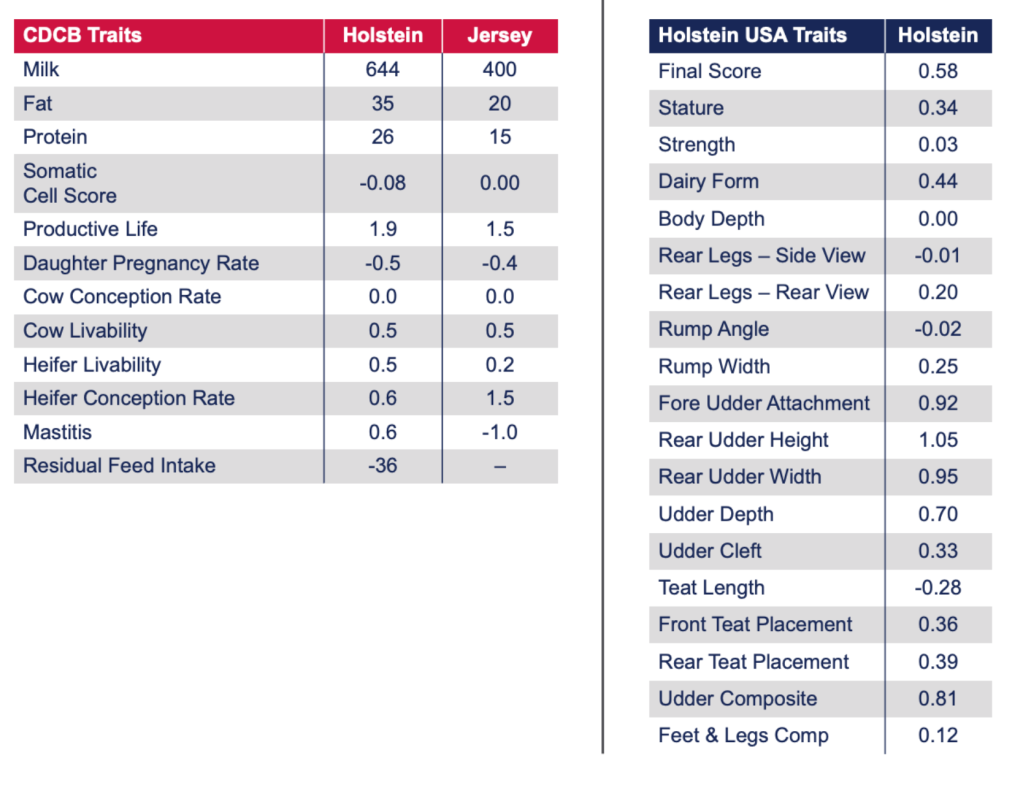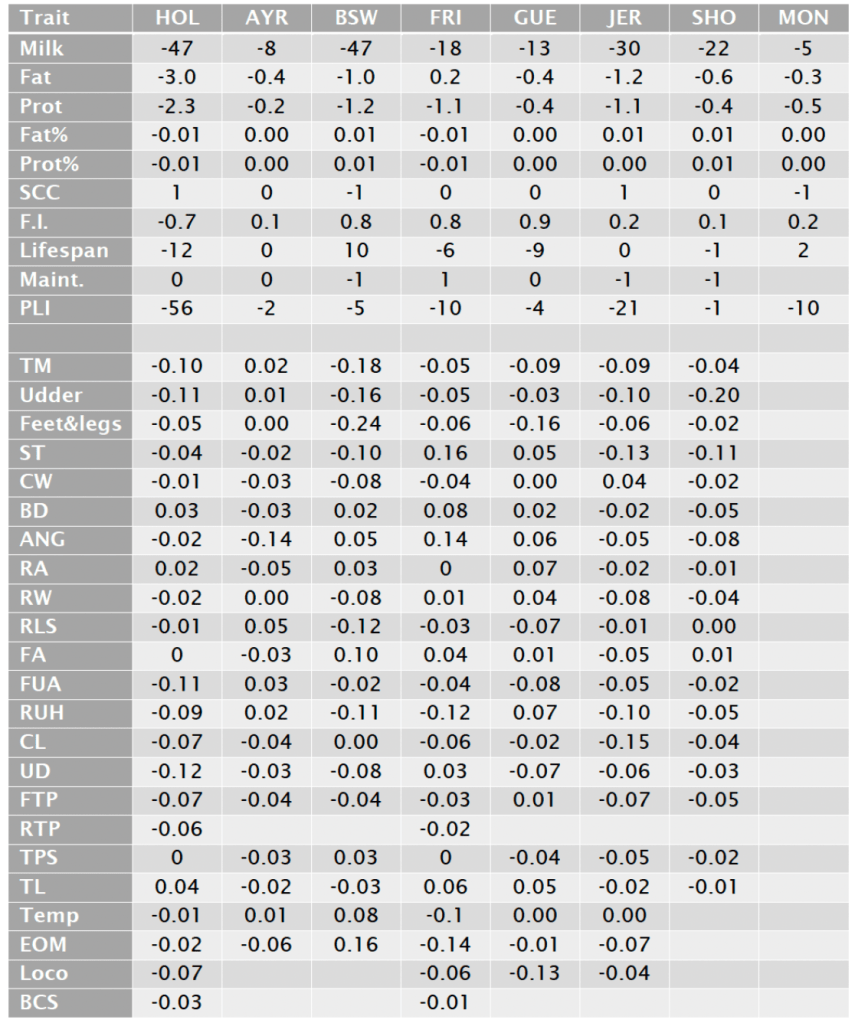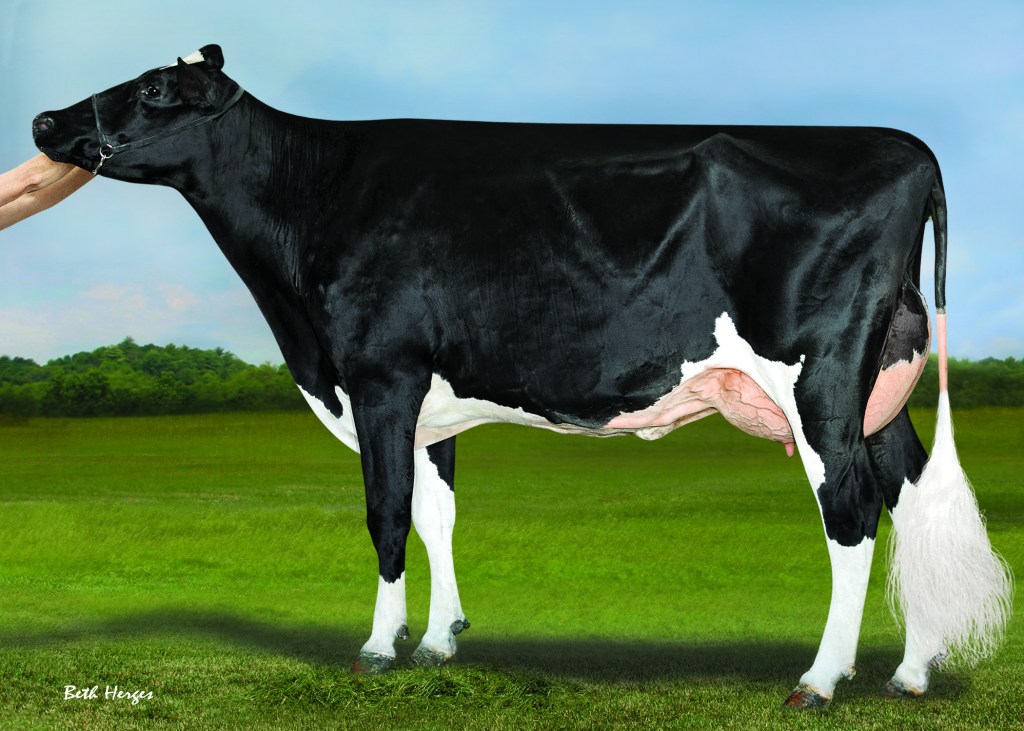Genetic diversity, a base change, positive movements for key bloodlines, and future mating flexibility: these phrases all sum up ABS Global’s April 2025 Genetic Evaluation results. The outcome of this proof run strongly reinforces our long-standing strategic focus committed to genetic diversity and its positive impact long term. This Sire Summary was also met by U.S. and U.K. base changes as well as a formulation update to Net Merit (NM$), causing significant industry shifting.
This blog breaks the day down into three areas: the actual base change, the importance of genetic diversity, and the performance of Genus ABS sires. Without further ado, let’s dive in.
First: The Base Change
The April 2025 Genetic Evaluation reflected a base change for both the U.S. and U.K. A base change occurs in the U.S. every five years, while the U.K. base changes annually. As a reminder, a base change is a recalibration of the population back to zero to account for genetic progress that has been made. Think of a base change as a report card for genetic progress.
Earlier, we communicated the base change estimates, and we are happy to announce that the actual total PTAs were higher than anticipated. The tables below outline the total change for the U.S. as well as the U.K. base change for the April 2025 Sire Summary. Specifically, regarding the Net Merit formulation, a drop of 404 NM$ was estimated, but the actual change was 338 NM$.


The base change also impacts internal Genus ABS evaluations, particularly the Genus ABS Health Index (AHI) as three CDCB traits are incorporated into its calculation. Here’s the impact the base change had on AHI:
- For ABS-marketed Holstein sires (236 sires), the average AHI change decreases slightly by 0.68 points, with a high correlation of 98.22% when compared to their December 2025 AHI values.
- For all ABS sires (8305 sires), the average AHI change is a minor decrease of 0.82 points, with an even stronger correlation of 99.19% to their December 2025 AHI values.
Overall, these changes suggest that the genomic improvements are having a positive impact on health, resulting in only a slight change in AHI and indicating ongoing progress in improving health traits.
Next: The Importance of Genetic Diversity
Some key players across the industry have relied on genetics that dominate the ranks, which results in a few sires drastically influencing genetic plans. While this strategy could lead to generating the next high-ranking sire, it’s an approach that is more likely to increase the risk of future challenges for dairy producers that come with potential inbreeding. So, balancing both is imperative, which is why Genus ABS strives to offer a diverse lineup with genetic superiority.
What is genetic diversity? In simple terms, genetic diversity is the number of different bloodlines used within a customer’s herd or a genetics company’s breeding program. It is determined by the number of different sires, maternal grandsires, and maternal great grandsires of bulls used in a breeding program.
Why Does the Diversity of Sires Used in Our Genetic Plan Matter?
- It minimises the risk of any single sire reranking or dropping significantly.
- It maximises pregnancy production by lessening fertility influences.
- It reduces the potential of uncovering hidden haplotypes.]
Today, it’s important to be aware of the genetic diversity in your genetic plan as well as your genetic supplier’s. The average dairy herd size is increasing, the shift to using genomic bulls over proven continues to grow, and genetic protection is changing the industry. Thus, the need to use a bigger team of different sires is becoming a necessity. Our focus on diversity puts us in a prime position to provide dairy producers with genetics that work in their specific operations and offer future mating flexibility.
Finally: The Performance of Genus ABS Sires
Overall, it was a great Sire Summary for our key bloodlines around the globe, strengthening our core lineup and the next-generation sires in our pipeline. Our influential sire lines had a tremendous day, and the summary below showcases the highlights. Customer satisfaction around the world continues to soar because our diversity allows us to offer genetic solutions that meet our customers’ needs.
Sire Summary Highlights
HOLSTEINS
- With 6 of the top 10 £PLI bulls, including the top 4 available young sires, Genus ABS had a strong day!
- 29HO21534 HARMONY retains his #1 spot on the ranking, followed by paternal brothers 29HO21487 COLUMBIA, 29HO21537 ZEST, and 29HO21530 SEGMENT.
- 29HO21675 SECTOR-P and 29HO21531 HYPE also made their way into the top 10.
- Our 42 genomic sires in the top 100 are backed by real genetic diversity, represent 27 different sires and 28 different grandsires, and are the result of 41 different sire/grandsire combinations.
- 29HO19442 KNOWHOW remains the #1 proven bull on £PLI at 807, followed by 29HO19334 KETTLE.
- 29HO19376 ATLANTIS, the #1 bull with semen available in the U.K., finds himself in the top 10 for £PLI.
BRITISH FRIESIANS
- It was a strong day for our British Friesian young sires, as the top 4 sires are owned by Genus ABS.
- 29HO20184 VERITAS remains #1 and is followed by former #1 29HO20365 COVERACK*RC.
- In total, Genus ABS has 5 bulls in the top 10.
Even with the massive industry changes, the performance of key influential sires demonstrated the strength of the Genus ABS lineup globally. Don’t let that get lost in the shuffle of base change; Genus ABS had a solid day!
Over the last eight decades, we are proud to have delivered significant genetic progress for our customers, and we look forward to continuing to in the future. As your partner in genetic progress, we are here to help you accelerate genetic improvement through a diverse genetic offering that keeps your goals top of mind.
Looking for a partner in genetic success? Find your local Genus ABS representative today below.






